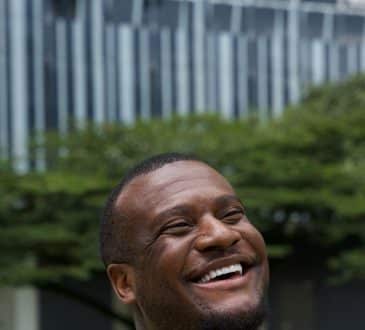Amazon CEO says RTO, or Else! – Is Remote Work Dead?

It was only a few years ago when working remote seemed all the rage. An endless stream of articles all proclaiming the end of big cities, traffic jams and office politics as Covid forced us all to stay home, and away from each other.
Remember the predictions, the future of work was from anywhere: home, beach, mountains or Mars?
All you needed was a laptop w/camera and an internet connection. And thanks to modern conferencing and collaboration technologies like Skype, FaceTime, Slack, Zoom, Google Hangouts and MS Teams the dream of remote work seemed at last a real utopian possibility. No more wasted time on the road to and from, no more expensive lunches, dry cleaning bills, or weekly gasoline fill-ups. No more politics or sleepy meetings: A dream come true for most of us.
But like the weather – times change. It’s been 4 years. And Covid is behind us.
What has come to be known as the largest Work From Home (WFH) era productivity experiment of all time — has ended, and the results are in. Your CEO wants you back, all hands RTO (Return to Office), or else!
Why now?
For many of us WFH is a woven part of our daily lives. And it works, or so we thought.
But in a recent letter to all Amazon employees CEO Andy Jassy officially ended the company’s hybrid flex schedule and ordered a full 5-day RTO work week. Jassy says being in-office strengthens culture, facilitates collaboration, brainstorming and creativity enhances innovation.
In response, the crew cries foul! The full-time RTO mandate is a broken promise, and management needs to reconsider the consequences. But Jassy, staunchly upright like a winning coach looking at a losing season is unfazed by distraction:
“We understand that some of our teammates may have set up their personal lives in such a way that returning to the office consistently five days per week will require some adjustments. To help ensure a smooth transition, we’re going to make this new expectation active on January 2, 2025.”
Huh? Yikes!
That sounds a lot like there’s little room for discussion and you best come back full time, or else don’t come back at all.
Sound too harsh? Too old school maybe? Turns out he’s not alone.
A new KPMG consulting firm survey (Jul-Aug 2024) of 1,325 CEOs in 11 countries revealed a whopping 80% of them believe their hybrid workforce will be nearly 100% back in the office full time over the next 3 years! And how is that working out?
If you ask the troops, the troops are not happy about it. They sound back with a simple question: Why force workers back to the office 100% full time when part time was good enough?
According to an Accenture global study 83% of global workers prefer a hybrid work model.
Doesn’t that mean that a full time 100% RTO mandate could backfire?
Some staffers say it’s Budget Season (corporate budgeting for 2025) and RTO is a quiet RIF (reduction in force), a chance to reduce staff via attrition rather than implementing more expensive layoffs next year.
Others, for starters cite the cost of going back into the office more specifically. Not only does working from home offer a better work-life balance, but it also saves workers a boat-load of real dough in monthly expenses.
If you do the legwork like I did for instance you’ll find the average US worker spends roughly $30/day to venture back into the office, including things like morning coffee, lunch, gasoline, dry-cleaners, car washes, personal grooming, etc, all averaged in.
As a result, a Full-time RTO costs on average $600 per month (20-days x $30) to work in an office full time. But that can also easily top $1000/month per worker in California where I live. Childcare and pet care alone can add hundreds.
That’s still $7,200-$12,000 each year in extra out-of-pocket expenses per staffer to join hands in the conference room once a day in order to prove they’re obviously happier, more creative, productive brainstormers inside a glass building. That’s a tough sell in my view.
So now what… ?
Well, according to Stanford Economist Nick Bloom it’s not a winner take all, the sweet spot is actually in the middle, and the research pans out. It’s the Hybrid Remote Workforce Model.
Written by Rick Andrade.
Have you read?
KPMG: Canadian CEOs Grow Cautious on Economy, Despite Optimism for Their Own Firms.
Nvidia’s AI Revolution Sparks Unstoppable Demand, Jensen Huang Says.
Steward Health Care CEO Ralph de la Torre Resigns and Files Lawsuit Against Bernie Sanders and HELP Committee.
Green Steel Revolution: Metinvest’s CEO on Strategic Expansion Plans.
IATA Announces that 100 Airline CEOs Commit to Safety Leadership Charter.
Bring the best of the CEOWORLD magazine's global journalism to audiences in the United States and around the world. - Add CEOWORLD magazine to your Google News feed.
Follow CEOWORLD magazine headlines on: Google News, LinkedIn, Twitter, and Facebook.
Copyright 2025 The CEOWORLD magazine. All rights reserved. This material (and any extract from it) must not be copied, redistributed or placed on any website, without CEOWORLD magazine' prior written consent. For media queries, please contact: info@ceoworld.biz








